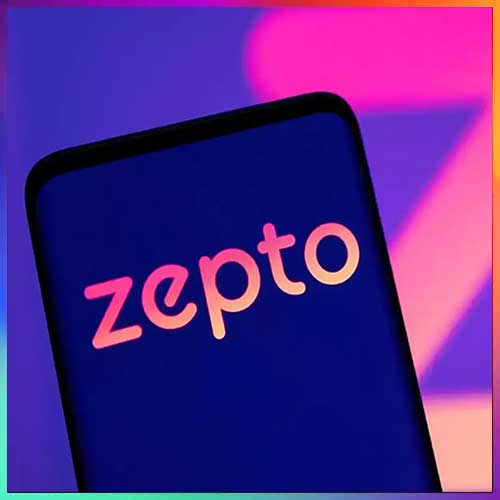
5G is beckoning to an era of intelligent and connected devices. It is said to evolve and upgrade the human experience and will spur innovation across many industries and provide a platform for emerging technologies to grow. Dhananjay Gore, Senior Director Engineering, Head of Qualcomm Research India throws more light on how Qualcomm is revolutionizing the connected world in terms of innovations in 5G -
The 5G ecosystem will focus on providing a lot more in terms of new experiences. In addition to faster and more reliable mobile broadband, the focus will be on delivering ubiquity, low latency and adaptability in all conditions for future users. 5G will spur innovation across many industries and provide a platform to emerging technologies such as the IoT to become an integral part of the ecosystem.
Qualcomm is leading the world to 5G. Its vision for 5G is a unifying connectivity fabric to connect new industries/devices, empower new services, utilize new spectrum bands/types and bring new levels of cost/energy efficiency.
“As we did with 3G and 4G, We are driving 5G NR (New Radio) from standardization to commercialization – contributing to 3GPP standard activities and collaborating with industry leaders on impactful 5G demonstrations/trials to prepare for commercial network launches. We are leading the standardization of 5G NR in 3GPP (3rd Generation Partnership Project) with key inventions such as a scalable OFDM numerology, a self-contained subframe, and new LDPC channel coding,” explains Dhananjay Gore, Senior Director Engineering, Head of Qualcomm Research India.
Qualcomm has recently announced its first 5G modem, the Snapdragon X50, which will enable 5G mmWave trials and early deployments. It has also developed best-in-class prototypes/testbeds in both mmWave and Sub-6 GHz to demonstrate and verify its innovative 5G designs, and to contribute to and drive 3GPP standardization of 5G NR. “At the same time, we are leading the evolution of 4G LTE to its full potential with LTE advancements such as unlicensed spectrum, narrowband IoT and more,” he says.
India as an R&D hub…
Qualcomm invests billions in R&D and takes significant risks to invent technologies that advance the mobile industry. As a result, its inventions fundamentally influence all aspects of mobile implementations and user experiences. Over the years, the role of Qualcomm in India has evolved from being a reliable execution engine for legacy products to being a centre of excellence for end-to-end product engineering from chip design to commercialization.
Qualcomm India is also contributing to cutting edge technology innovation in areas such as 4G, 5G and IOT.
• India team’s primary focus is on solutions that support Qualcomm’s global initiatives. These include smartphones, networking products, as well as other adjacent/IoE markets (ie, automotive, small cells, wearables)
• The teams work on wide range of projects in the area of wireless connectivity, Multimedia, CPU& GPU, as well as hardware and software architecture
• Other focus areas include wide ranging projects covering virtualreality, satellite modem design and advanced camera R&D.
5G - a great enabler of IoT products…
5G is expected to bring new capabilities for the massive IoT with more efficient air interface & network design. It will enable mission-critical control of IoT services that deliver new levels of performance. 5G will spur innovation across many industries and provide a ubiquitous platform to the IoT to become an integral part of the ecosystem.
Qualcomm is uniquely positioned with its scale and expertise in connectivity and compute to invent and deliver the technologies needed in IoT. It is inventing and delivering at speed and scale, advanced connectivity (3G/4G LTE modem, Wi-Fi, Bluetooth, RFFE, Position/Location etc.) and computing (CPU, GPU, DSP, Multimedia, computer vision, security, etc.) technologies for the IoT.
“We are helping our customers commercialize their products faster and in a cost-effective manner by using our differentiated platforms in the areas of Smart Home, Wearables and Smart cities. These solutions offer the connectivity, interoperability; security and accessibility customers need to create innovative end products that provide more personalized services and new user experiences,” says Dhananjay.
Qualcomm continues to expand the capabilities of LTE to accelerate progress in IoT, including driving the new narrowband technologies, like eMTC (enhanced Machine Type Communication, often referred to as LTE-M) and NarrowBand-IoT, with Release 13 of the 3GPP standard towards commercialization.
When asked whether 5G will be a reality in India, Dhananjay says that it has great potential in India based on the opportunities in the mobile device market size (India is currently the second largest mobile market globally. A lot of early applications may be in the IoT space). Given the rapid adoption of 4G in India, the market will not lag behind in adopting 5G and will be well synched with the global rollout. In addition, India has end-to-end hardware and software manufacturing capabilities that make it a unique supply base for IoT/IoE products. “With the right support within the ecosystem and collaboration, there's no reason why India needs to be trail far behind in 5G,” sums up Dhananjay.
See What’s Next in Tech With the Fast Forward Newsletter
Tweets From @varindiamag
Nothing to see here - yet
When they Tweet, their Tweets will show up here.





























